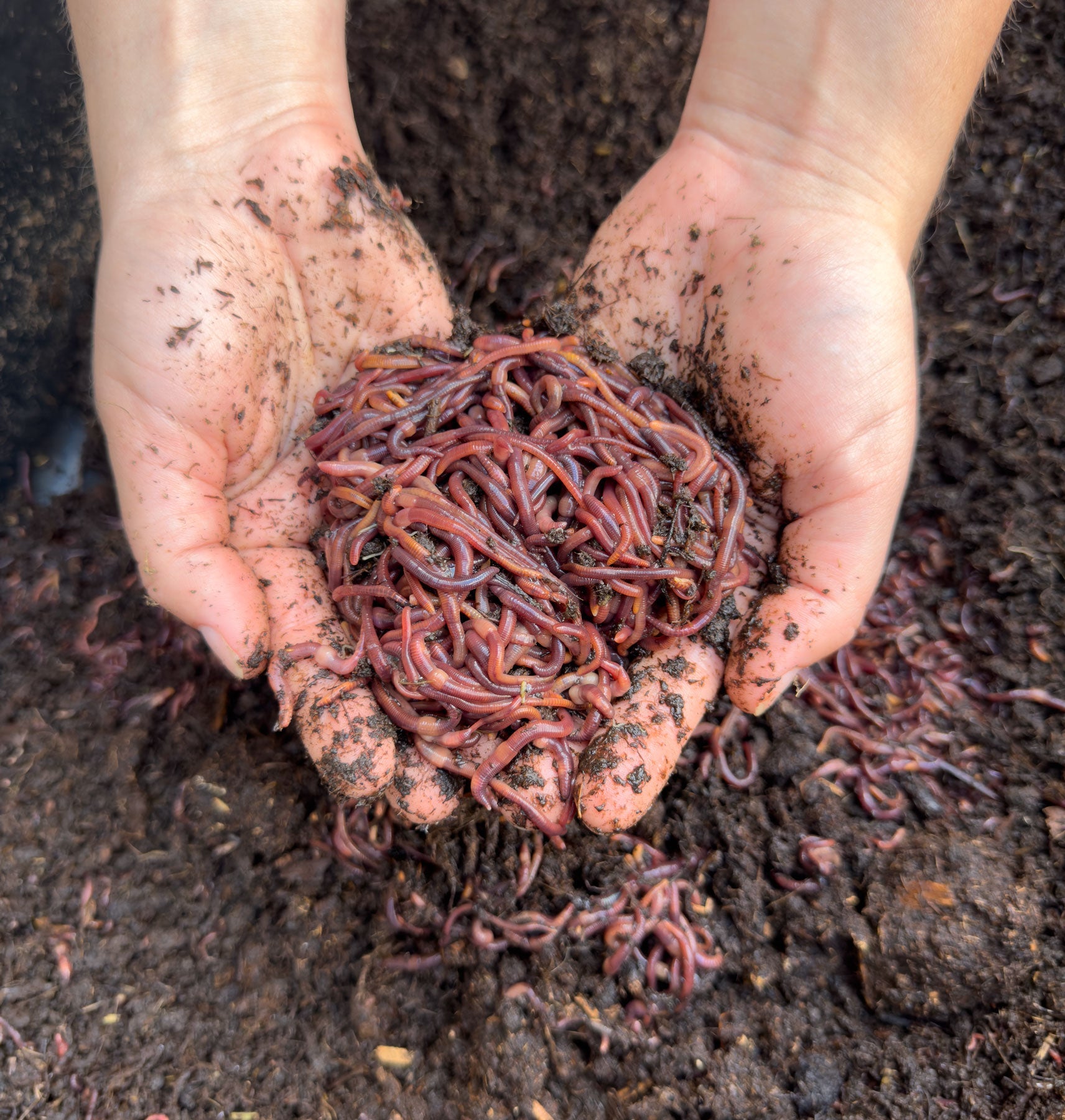Use Lake Hickory Bait for Remarkable Lawn Health and Gorgeous Greens
Use Lake Hickory Bait for Remarkable Lawn Health and Gorgeous Greens
Blog Article
Red Wigglers: The Unsung Heroes of Organic Waste Recycling
Red wigglers, or Eisenia fetida, offer as important representatives in the organic waste reusing procedure, transforming discarded products into valuable vermicompost. As the globe progressively seeks solutions to battle waste build-up and enhance farming efficiency, understanding the duty of these worms ends up being important.
What Are Red Wigglers?
The impressive durability of red wigglers, scientifically recognized as Eisenia fetida, highlights their essential duty in organic waste recycling. These tiny, reddish-brown earthworms are normally found in decomposing raw material, such as garden compost piles and manure loads. Lake Hickory Bait. Unlike other earthworm types, red wigglers thrive in nutrient-rich settings and are highly reliable at breaking down organic materials, making them vital for vermicomposting

(Red Wiggler Express)In addition to their function in waste decrease, red wigglers add to soil health and wellness by boosting dirt framework and aeration through their tunneling activities (Lake Hickory Bait). Their existence in composting systems not just boosts decomposition rates however likewise advertises a lasting strategy to waste administration, showing their value in eco-friendly preservation initiatives
Benefits of Composting With Worms
Composting with worms, particularly red wigglers, offers various advantages that improve both waste administration and soil health and wellness. First, these worms effectively damage down natural waste, transforming it into nutrient-rich vermicompost that enriches dirt. This procedure speeds up decay, permitting a quicker recycling of kitchen area scraps and other organic materials contrasted to typical composting approaches.
Furthermore, the vermicompost created by red wigglers is brimming with helpful bacteria, which help improve dirt framework, aeration, and moisture retention. This boosts the total health and wellness of plants, promoting vigorous development and boosted yields in yards and farming settings. The usage of worms in composting reduces the manufacturing of greenhouse gases, such as methane, adding to a more lasting waste administration system.

How to Begin Vermicomposting
Developing a vermicomposting system is an uncomplicated procedure that can yield significant benefits for both waste administration and dirt enrichment. To start, choose an ideal container, such as a plastic container or wood box, with ample ventilation holes to make certain appropriate air flow. The measurements must preferably be about 2 feet by 3 feet, permitting enough room for the worms to thrive.
Next, prepare bedding material, which can contain shredded paper, cardboard, or coconut coir. This bedding must be dampened to produce an appropriate environment for the worms. When the bed linen is in place, introduce red wigglers (Eisenia fetida) right into the container, typically around one pound of worms for every square foot of surface area.
Following the positioning of worms, add organic waste, such as fruit and veggie scraps, coffee grounds, i loved this and smashed eggshells. With these actions, you will efficiently initiate a vermicomposting system that adds to sustainable waste monitoring and enhances your soil.
Maintaining a Healthy And Balanced Worm Bin
(Lake Rhodhiss Bait)Maintaining a worm container thriving calls for regular focus and like make certain the health and wellness of the red wigglers and the performance of the composting process. Correct maintenance starts with keeping track of the dampness levels; the container should perspire yet not soaked. An excellent general rule is to keep a consistency comparable to a wrung-out sponge.
Delicately blending the bed linen and food scraps every few weeks stops compaction and guarantees that all worms have accessibility to oxygen. Furthermore, it is vital to feed the worms appropriately.
Temperature guideline is an additional vital aspect. Red wigglers grow in a variety of 55 to 77 levels Fahrenheit. If the container ends up being too warm or cold, the worms might come to be worried - Lake Hickory Bait. Finally, periodically examine for indications of health, such as worm population growth and the existence of healthy and balanced castings. By faithfully taking care of these aspects, one can preserve a robust and efficient worm container.
Influence on Lasting Living
The effective maintenance of a worm container not just benefits the wellness of red wigglers yet also adds significantly to sustainable living practices. By reusing organic waste, such as kitchen area scraps and backyard debris, red wigglers aid draw away substantial amounts of product from land fills. This reduction in waste not only decreases greenhouse gas discharges yet also lessens the ecological worry related to waste monitoring.
In addition, the castings generated by red wigglers act as a nutrient-rich organic plant food, enhancing soil health and wellness and promoting plant development. This all-natural choice to chemical fertilizers sustains lasting agriculture and horticulture methods, decreasing reliance on artificial inputs that can harm ecosystems. In addition, worm composting cultivates understanding of waste monitoring, urging people and communities to adopt more lasting practices.

Verdict
In summary, red wigglers offer as essential factors to organic waste recycling via their reliable decay of natural materials. By incorporating vermicomposting into waste management techniques, people and neighborhoods can substantially reduce waste while promoting environmental sustainability.
Report this page